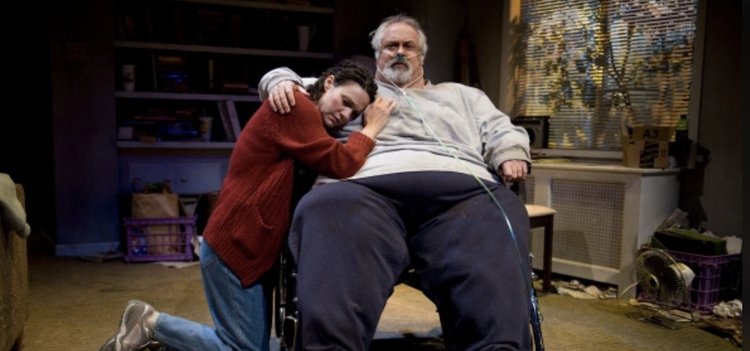Tropic Sprockets / The Whale
By Ian Brockway
From the inimitable director Darren Aronofsky (Black Swan) comes the long awaited film “The Whale.” [For showtimes check Tropiccinema.com.] By inserting the concepts of Gothic melodrama in everyday life, the film is sure to polarize but it also portrays the physical ordeal of a highly intelligent, sensitive and very lonely man in a painfully authentic way. Love it or not, this film compels the eye. Rich in symbolism, it is unapologetically eccentric and far from boring.
Charlie (Brendan Fraser) is 600 pounds. He can just about make it to the bedroom, bathroom and kitchen. He can barely breathe.
Charlie is an online English teacher. The students admire him but because of his appearance Charlie abstains from showing himself on camera. Charlie has always been a heavy man but he let himself become dangerously overweight due to depression over the death of his male lover.
Our first sight of Charlie is of him engaged in pleasuring himself watching porn. Then in the midst of orgasm, he has a cardiac event and roars in shock and pain, very nearly having a heart attack. As Charlie experiences another spasm of pain, he is visited by Thomas (Ty Simpkins) a shady young missionary. Charlie is not the slightest bit interested but Thomas recites an essay on Moby Dick and this calms him.
Charlie’s nurse Liz (Hong Chau) arrives to convince him to go to the hospital. Charlie refuses, despite the fact that he has congestive heart failure.
Added to the somatic drama is the concept of Doomsday, the end of the world. Thomas mentions the end of times frequently. Outside the house, there is nearly always a constant deluge of clattering rain and oppressive skies. There is an anemic bird on the windowsill, invariably begging for his dinner.
The concept of Doom, either environmentally or otherwise is a frequent hallmark of Aronofsky’s work. There may be good and there may be evil but one thing is certain: the concept of Doomsday is on everyone’s mind. Liz and Thomas both mention it, if not explicitly then by suggestion. The Reaper is invariably present with Charlie: one can see it when he repeatedly looks over his shoulder with startled, shocked or quizzical eyes.
Though his smallish head is perched on his morbidly obese body, Charlie symbolizes a human version of the earth, wracked with guilt and carrying the weight of the world with him. The sight of his toxically fat body borders on grotesque camp, but it ultimately showcases a body in anguish in a manner very few films ever have achieved with respect and care.
Soon in true Aronofsky fashion, events become more and more chaotic when Charlie’s grim-minded and mocking daughter (Sadie Sink) comes to visit along with her biting mom (Samantha Morton). Charlie is surrounded by violent storms both inside the house (with his daughter and a hissing ex-wife) and outside with torrential rain.
The sight of Charlie’s open and delighted expression seems to calm those around him. He is the Buddha, enmeshed in fat, he is baby faced and gentle, a nonjudgmental philosopher, a calm center in the familial vortex.
Charlie is also a martyr. His body is his own cross of pain. He sweats in torment, lashing himself with guilt. The weaponization of food, (a double fisted pizza) is a means of self-punishment in the hope of expiation, Charlie’s excruciating steps to his daughter mirror the Stations of the Cross.
While some provocative moments might make viewers uncomfortable, this heartfelt portrait of Charlie in trouble is great in empathy and import. The Apocalypse may indeed come via the climate or even by domestic means but a calm and ticklish center exists in a morbidly obese man with the eyes of a child.
Write Ian at [email protected]
[livemarket market_name="KONK Life LiveMarket" limit=3 category=“” show_signup=0 show_more=0]






No Comment